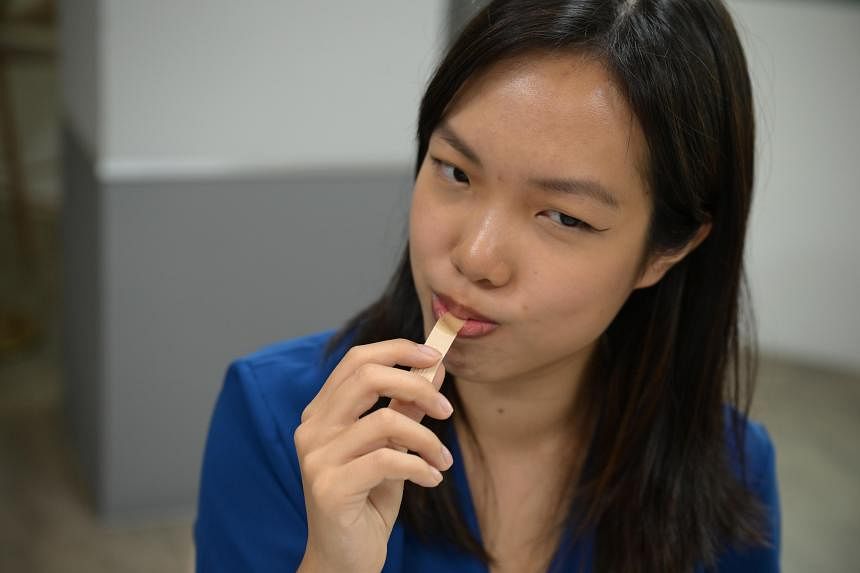SINGAPORE – Salt might just be the closest thing chefs have to magic. It pushes flavours to their full potential, it tenderises and preserves, it even makes colours pop. In short, if you want a dish to sing, you know what to add.
Little wonder that Singaporeans love it so much. Around 90 per cent of them exceed the World Health Organisation’s recommended salt intake of one teaspoon, or 2,000mg of sodium, a day. In fact, the average Singaporean consumes nearly double that – about 3,600mg of sodium – daily.
Like many of my compatriots, I have become something of a salt fiend. I grew up eating my mother’s sodium-curbed cooking – steamed fish and meats where natural aromas did much of the gustatory heavy lifting – and once I found my own way in the kitchen, it was as if a whole new world had cracked open.
Be generous with your seasoning, said recipe books, and I was. Your pasta water should be as salty as the Mediterranean Sea, advised Italian chefs on YouTube. I happily obliged.
But eventually, the nagging got to me. Yes, I know, excess salt makes me susceptible to a whole host of diseases. Yes, I know there are ways to get around the loss of flavour I so fear. And before contributing to the avalanche of articles encouraging Singaporeans to alter their diet, I thought I better try it myself.
So for 21 days, I tried my best to ignore my impulses to maximise flavour, and to keep to a limit of one teaspoon of salt a day.
My objective? To see whether these three weeks would make my taste buds more sensitive to salt, which would, in theory, temper my urge to over-season food in the future.
Only time will tell whether my experiment has succeeded in instilling healthier habits in me, but here is how it went.
Day 0
On March 22, I make a trip to the Health Promotion Board (HPB) to determine my salt threshold.
I am ushered into a room with six glass bottles, each containing a clear solution with different levels of sodium. The process is simple – I am to taste each until I detect a hint of saltiness.
I go through three bottles with no luck. But on the fourth, as I place the damp paper strip on my tongue, I feel a faint tingling not unlike the briny tang of seawater, only subtler.
So my score is four out of six, one being most sensitive and six the least.
Not too bad, all things considered, for someone who used to down a bowl of mala xiang guo (spicy, stir-fried hot pot) a week. But it seems unlikely that I will be able to dredge a modicum of taste out of the first three solutions, even after 21 days.
Day 1
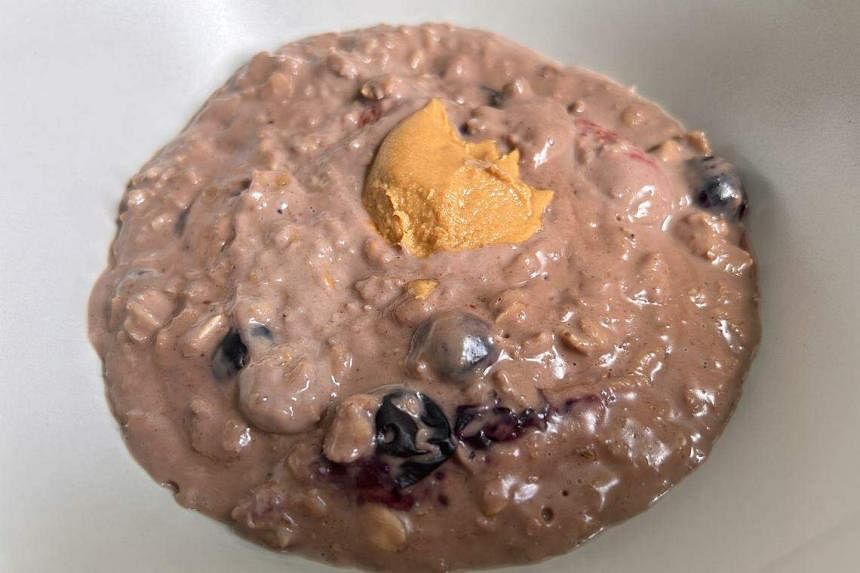
Healthy meal No. 1 is a jar of overnight oats, which I pack to the office and slurp miserably at my desk, while my colleagues trot out to hawker centres for lunch.
Later, with all my pantry staples such as soya sauce and fish sauce stowed out of reach, I go out to procure some replacements. I swop Himalayan pink salt for K-salt, which has 30 per cent less sodium, and replace my Maggi chicken stock cubes with the brand’s healthier-choice option. I also load up on natural umami agents such as mushrooms and tomatoes.
With the K-salt, mushrooms and tomatoes, I cook a dinner of stir-fried chicken and scrambled eggs. The flavours are more muted than usual – perhaps because of the lower sodium content – but it is by no means bland. The cabbage brings a mild sweetness, the tomatoes are tart, and the mushrooms add an earthy punch.
So far, so good. I start to think that perhaps three weeks of this will not be so bad.
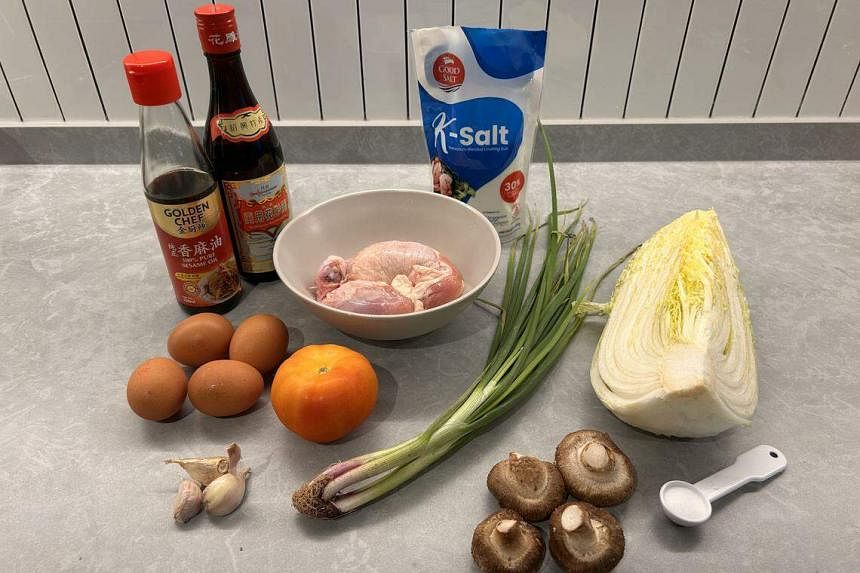
Day 2
I had assumed that sticking to my daily sodium limit would be a breeze at home, where I can measure the exact amount of salt used in cooking.
Wrong. As it turns out, there is sodium in everything – herbs, milk, even tofu.
This is why my tuna melt sandwich – filled with cheese, capers, mayonnaise, and low-sodium tuna – is so flavourful without added salt. I feel a twinge of guilt as I tuck in.
Day 3
On the third day, I encounter my first big challenge – how to limit my salt intake at a media tasting, where the dishes are decided by the chef and shared by the entire table.
For fear of earning the ire of the chef and my dining companions, I say nothing. With as much restraint as I can muster, I pick at the generously seasoned, richly layered dishes that stream out of the kitchen like a siren song, and make a mental promise to compensate with a saltless dinner.
That, too, fails. Dinner is a lavish buffet at an award ceremony I accompany my husband to. There is sourdough, lasagna and best – or worst – of all, cured salmon, flushed an inviting shade of orange and crowned by equally saline aromatics like capers and pickled onions. All delicious, all containing unknown levels of sodium, all burying my diet.
I consider drinking more water to flush the excess sodium out, but am reminded by a dietitian from HPB that it does not work this way.
Water can help quench thirst, but a consistently high-salt diet will disrupt the body’s physiological mechanisms and cause it to retain more water anyway.
Day 4
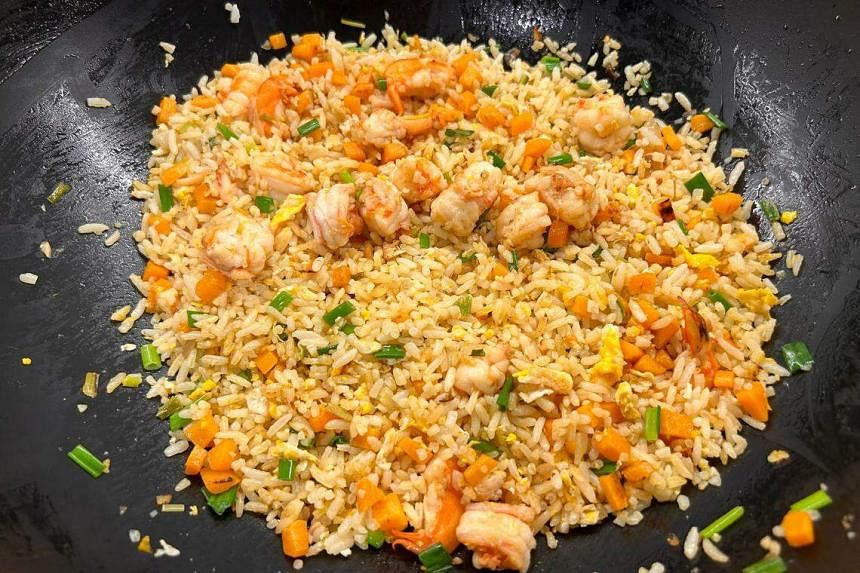
I pay the price on the fourth day with a saltless – as far as possible – plate of fried rice I whip up myself.
Even my attempts to inject some sweetness and umami with prawn heads and carrots are not enough to rescue the dish from the crushing tide of blandness that sweeps over my taste buds.
Day 5
I am once again eating out. Some friends of mine are celebrating their birthdays at Koal, a grilled meat restaurant in Scotts Road.
I order a $20 pork collar steak – because I cannot stomach the thought of paying $31 for an unseasoned ribeye – and ask for no salt as part of my ongoing penance for Day 3’s extravagance.
Thankfully, this dish can coast on the quality of its meat alone. The pork, delicately marbled, is unctuous and juicy. My friends clamour for a taste, but I bat them back to their high-salt steaks.
Day 6
Buoyed by my successful request for an unseasoned meal at a restaurant, I ask for a bowl of noodles without soya sauce at a Chinese food chain. The waiter obliges, then delivers a bowl of broth so tasty, I know my specifications have been ignored.
Not all restaurants, it seems, can adjust the salt content of their food on demand, especially when it contains pre-made soups or sauces.
Day 8
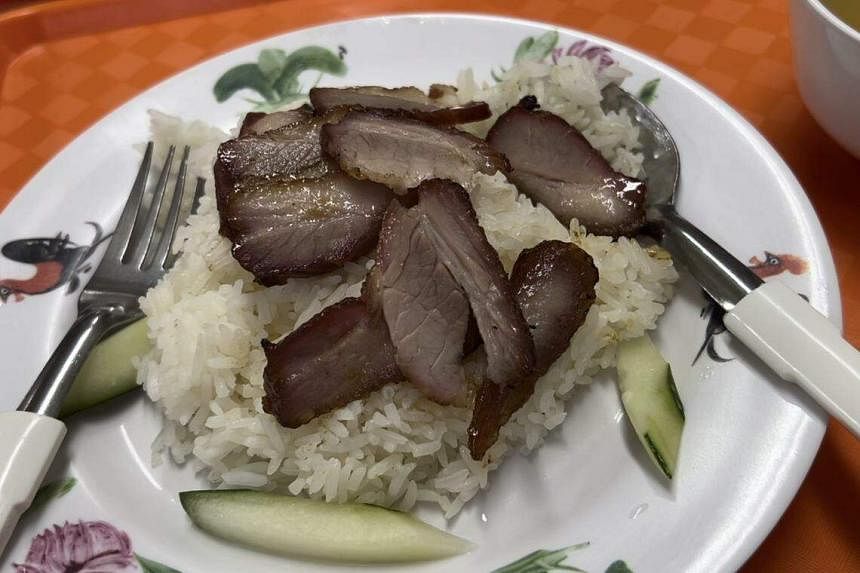
I attempt to dine at a hawker centre. Armed with HPB’s low-sodium calculator and the Chinese phrases for “less salt” and “no gravy please”, I order a plate of sauceless char siew rice.
According to the calculator, it contains just over 1,000mg of sodium, or less, hopefully, considering I omitted the gravy. Not too bad, especially when you set it against bigger offenders like fish ball noodle soup (2,500mg a bowl) and mee soto (3,700mg a bowl).
Day 10
I encounter the first of what will turn out to be many salads on this diet, at Mexican fast-food chain Guzman y Gomez, no less.
I’ve never been one to pay for a salad, and would not have done so, had it not been one of the lowest-sodium options on the menu.
My calories are few and my regrets plenty. After dinner, I walk around Funan mall trying to find something else to fill my stomach, but picture the spoonfuls of salt hidden within each slice of cake or loaf of bread, and force myself to turn away.
Day 13
I’m back at hawker centres. This time, I head to Mei Ling Market & Food Centre, where lower-sodium identifiers have reportedly been handed to some stalls.
However, it appears that none of the hawkers have got round to pasting these identifiers on their menus. I whip out the HPB calculator that is fast becoming a permanent tab in my Google Chrome app and settle for a plate of steamed chicken rice (1,500mg), trying my hardest not to finish it.
It occurs to me that eating out has become a stressful experience.
Day 16
It also occurs to me, as I scarf down my second ice cream of the week (it is Tuesday), that I have been consuming more sweets than usual. Perhaps it is because now that I can no longer indulge in salty foods on a regular basis, I’ve been seeking solace in sugar.
Day 22
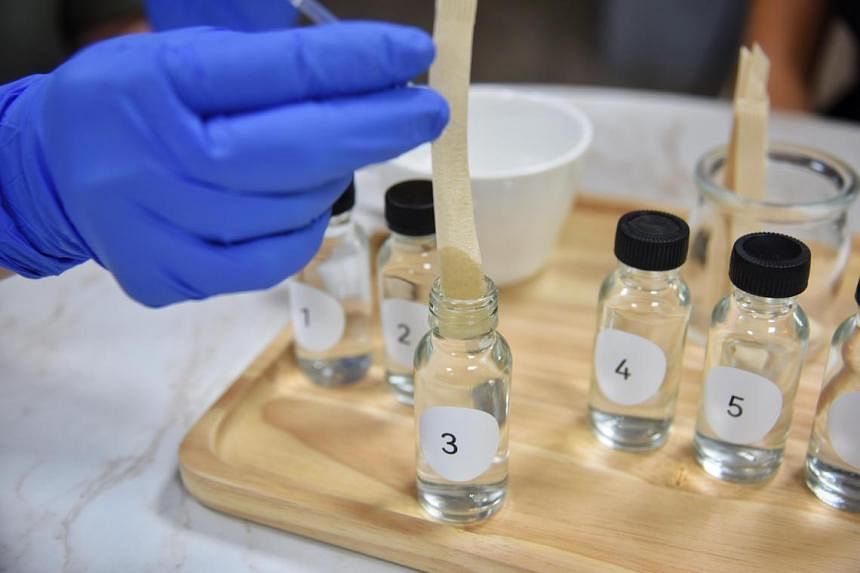
The moment of truth has arrived.
Back at HPB, my facilitator opens the first bottle, then another one. So far, nothing.
I place the third strip on my tongue and consider it carefully. I think I taste it – the indefinite suggestion of flavour.
I try another strip dipped in the same solution, and there it is again. This time, I recognise the trace of the sea more clearly.
Relief floods my body as I realise that my taste buds have indeed grown more attuned to salt, moving up a notch on the sensitivity scale.
HPB dietitian Priscilla Li explains that this could be because my taste receptor cells went through at least one replacement cycle over the course of the last 21 days – hence why I was able to adapt to the new diet.

So, what now?
First things first, I’ll be glad to put the salt calculator away. It was cramping the fun of eating out and reminded me an awful lot of the calorie counting of my teenage years.
But though I may not stick rigorously to a daily limit of 2,000mg of sodium, I will try my best to consume salt in moderation.
Replacing it with other flavouring agents like lemons or mushrooms in home cooking feels manageable, as does the practice of having a lower-sodium dinner on days when I eat a heavy lunch.
After all, I’d be lying if I said I did not feel lighter by the end of the experiment.
While salt will always be a welcome presence in my kitchen, perhaps it is time I cleave less tightly to its promise of instant gratification.
